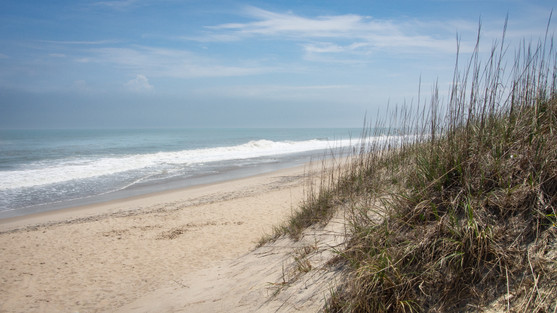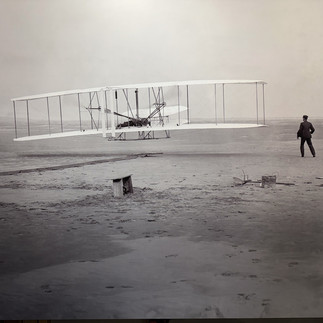4. To the Outer Banks and Back - The Coast!
- Craig Tidball
- Oct 30, 2024
- 3 min read
“A traveler without observation is a bird without wings.”– Moslih Eddin Saadi
Part 4. Reaching the Coast at the Outer Banks

Upon reaching the glorious Outer Banks, we quickly felt its unique climate. Temperatures dropped from the 80 degrees of previous days down to the low 60s. Even at 60 degrees, the sun warms up your body, but there may still be a cool breeze around you. We found we were constantly changing jackets to be fit for the right breeze. We're camping just on the other side of the Atlantic Ocean dunes, and we can hear its quiet, gentle roar throughout the night.

We ventured south along the Outer Bank's Highway 12 to Cape Hatteras Lighthouse. It's the tallest brick lighthouse in the country. I was all set to take the classic photos of this iconic black and white contrasting spire until we turned the last corner and found it completely surrounded by scaffolding for a much-needed refurbishment. On top of that, a thick fog rolled in. No classic photo today. We discovered that 25 years ago, workmen moved the lighthouse 2900 feet inland. Quite an undertaking. The winning contractor has a saying: "If man built it, man can move it."
Our KOA "on the beach" campground afforded us a chance to explore both the oceanside and the channel side of the narrow strip of land that is subtly shifting from year to year.
We had a full day left before our schedule called for us to leave the Outer Banks of North Carolina. The weather turned colder, but we decided to brave the temperatures and take a Hummer safari in search of the Colonial Spanish Mustangs. These rare wild horses roam the northern end of the Outer Banks. The protected Mustangs are direct descendants of those bred down in size for the overseas journey to the New World. About 110 of the horses now roam free and have a life expectancy of 20–40 years. They add about 6 to 7 to their number each year.
One of the unique aspects of this tour was that as we traveled north on the Outer Banks main highway, Route 12, the road became all sand as it followed the shoreline. There is no hint of pavement, just sand for as far as you could see and an occasional Route 12 sign. The trick was to stay in the hard-packed areas of of the path of previous drivers. The streets around the adjacent luxury oceanfront homes are also all sand. Residents need to plan their shopping, as trips to the grocery store or pharmacy are time-consuming. Driving through all the sand really slows down your progress.
We toured the excellent Wright Brothers National Memorial and learned of their 'never give up attitude' that developed powered flight. Later, as we traveled, we listened to David McCullough's "The Wright Brothers" on tape. I can highly recommend it as a fascinating study of their determination.
We were traveling in the off season of mid April. While the weather was cooler, we did enjoy the lighter crowds. The off season also can mean some venues and shops are closed. We were surprised how difficult it was to find smaller seafood restaurants.
There is considerable distance between attractions on the Outer Banks. It's a long, narrow strip of land. Plan accordingly. After some research we avoided the ferries on the south end of the banks due to their unpredictable schedule and other concerns for this time of year.
The many contrasts of coastal living are certainly worth experiencing and we look forward to a return trip to the sands of the Outer Banks where you may likely find us again Along the Pooka Trail.











































Comments